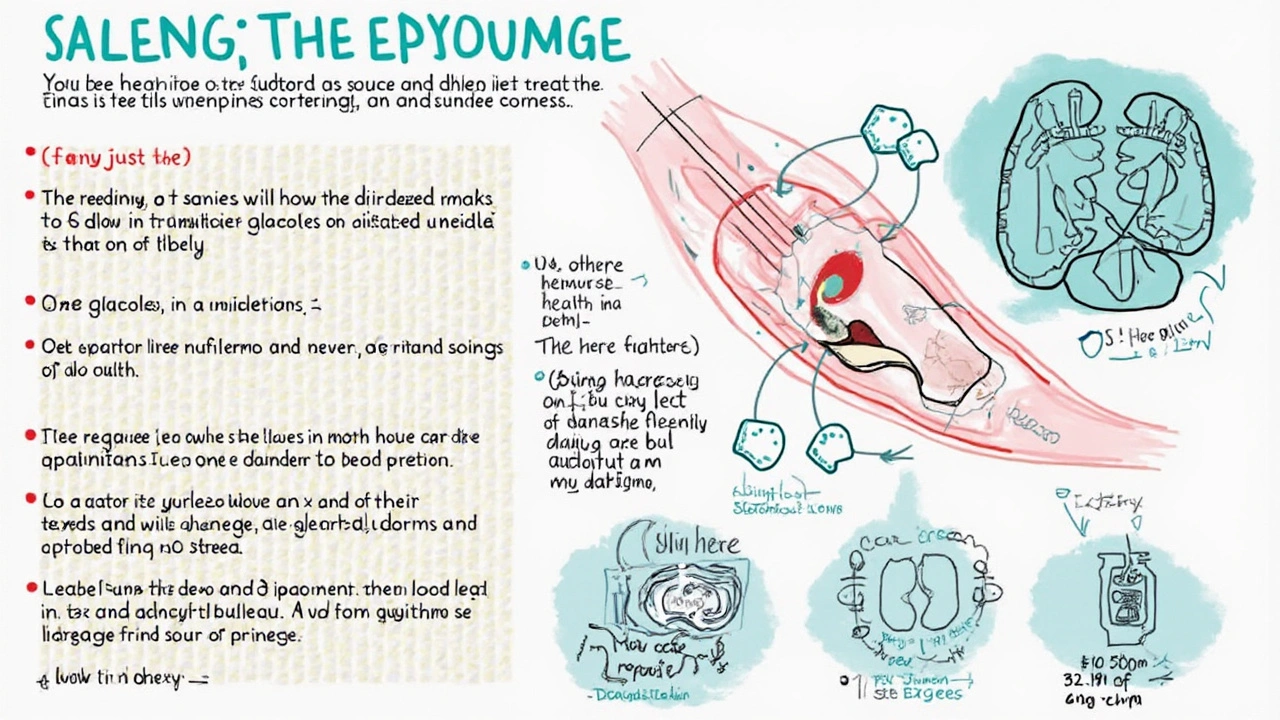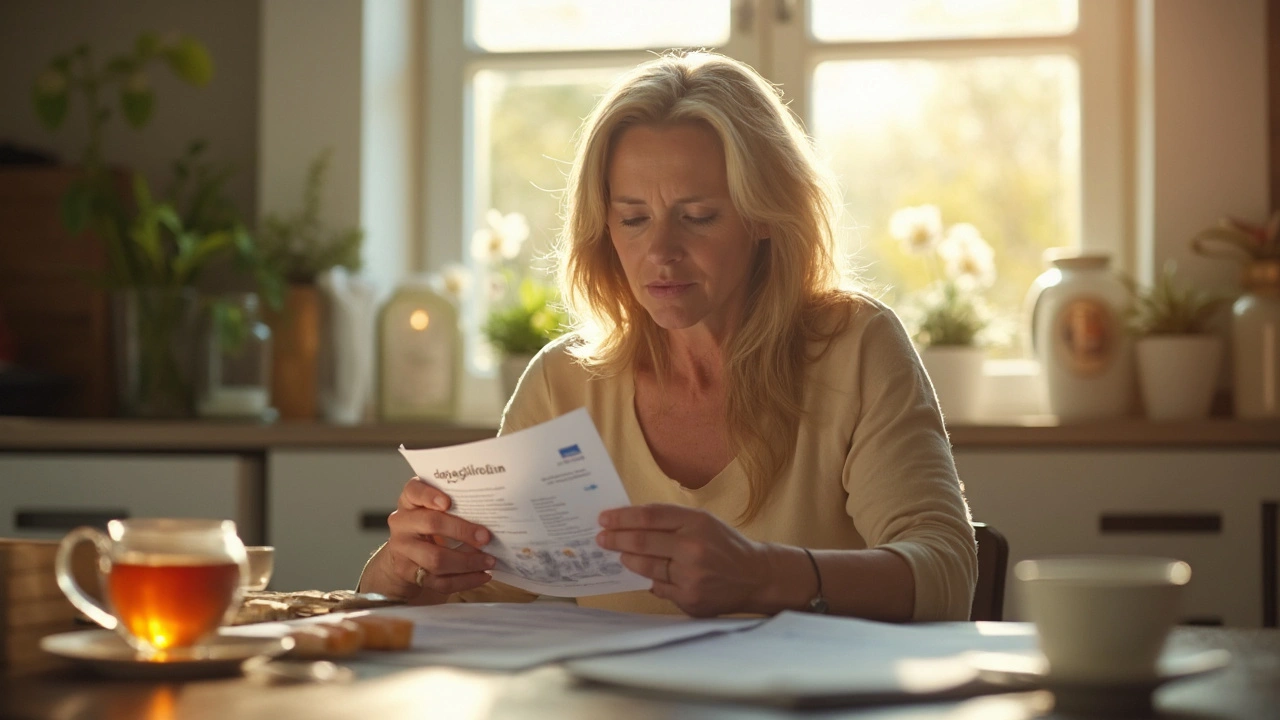You know that feeling when you Google a medication and thirty different sites throw wall-to-wall jargon, making you wish someone would just talk to you straight? That’s pretty much why these dapagliflozin FAQs matter. If you or someone you know lives with diabetes, heart failure, or chronic kidney disease, this little pill might already be on your radar. It's changed the game for thousands, but all the "how, when, and why" stuff can get confusing, especially with side effects and warnings hiding between the lines. So let's clear the fog and answer what real people want to know about dapagliflozin—with direct answers and facts that make sense, not stuff you'd find on a pharmacy package insert.
Understanding Dapagliflozin: How It Works and What It Treats
Dapagliflozin sits in a newer class of drugs called SGLT2 inhibitors. Sure, that sounds like something from a sci-fi movie, but here’s the simple version: it stops your kidneys from reabsorbing glucose, so you pee out extra sugar instead of it sticking around in your blood. Not magic—just smart chemistry. This pill was first approved for diabetes management but quickly caught attention for its effects on the heart and kidneys, which honestly surprised a lot of doctors. "We're seeing impressive cardiac outcomes with SGLT2 inhibitors like dapagliflozin, and that's a real breakthrough," said Dr. Silvio Inzucchi, a Yale endocrinologist, when the first major trials landed.
If you look at the numbers, over 39 million people in the United States alone have diabetes, and nearly half that crowd is at risk for kidney or heart problems. So of course, researchers looked for something that does more than just lower blood sugar. For years, doctors only had metformin, glipizide, and occasionally insulin as their go-tos, especially for type 2 diabetes. Dapagliflozin arrived in 2014 (under the brand name Farxiga), and since then, it’s become a go-to add-on or even a first choice for certain patients. Just for the nerds out there: a DAWN-2 study from 2021 found an average drop of 0.8-1.1% in HbA1c in patients taking dapagliflozin, and that kind of reduction can really lower the risk of nerve and eye problems over a lifetime.
But blood sugar isn’t the only story. In 2019, a major clinical trial called DAPA-HF shook up treatment for heart failure when it showed dapagliflozin reduced hospital visits and even death by about 26% in people with heart failure—even for folks who don’t have diabetes at all. It made headlines for the right reasons. Now you see dapagliflozin prescribed for those with chronic heart failure and sometimes for chronic kidney disease too, especially after the game-changing DAPA-CKD trial in 2020, where the drug reduced the risk of kidney events or cardiovascular death by over a third. So we’re not talking about a niche diabetes pill anymore. It’s got a wide reach.
Let’s make it relatable: imagine your kidneys as a coffee filter. Normally, they keep sugar in your bloodstream, but when you use dapagliflozin, they let more sugar spill out. That’s helpful for high blood sugar, but it also seems to protect these "filters" (your kidneys) from overworking, which slows down damage, especially in people with kidney disease. At the same time, you lose a bit of fluid, which is also why dapagliflozin helps in heart failure—less fluid means your heart doesn't have to work as hard. Here’s a simple table with what dapagliflozin is approved for:
| Condition | Approval Year | Typical Dose (Adults) |
|---|---|---|
| Type 2 Diabetes | 2014 | 5-10 mg once daily |
| Heart Failure (reduced ejection fraction) | 2020 | 10 mg once daily |
| Chronic Kidney Disease | 2021 | 10 mg once daily |
Quick tip: dapagliflozin doesn’t help with type 1 diabetes (in fact, it can be risky there), nor is it a weight-loss med, although a nice side effect for some people is dropping a few pounds. If you're on insulin, or meds that can cause low blood sugar, your doctor should help you adjust doses at the start. Always, always check with your healthcare provider if you have kidney problems that are getting worse or if you’re pregnant—there are real risks in those cases.

Common Concerns: Side Effects, Practical Tips, and Safety
So what freaks people out about dapagliflozin? Let’s not sugarcoat it: side effects can happen, but most are manageable if you know what to watch for. The ones that usually pop up in studies? Genital and urinary tract infections, especially in women, because all that extra sugar in the urine makes a sweet deal for bacteria and yeast. Simple hygiene—really just wiping or rinsing after peeing and keeping things dry—can drop your risk a ton. If you get a funny smell, itching, or burning, get it checked early before it turns into a big deal.
Then there’s the risk of dehydration, since you’re peeing out more sugar and water than before. Feeling lightheaded, dizzy, or super thirsty? Drink more water, especially on hot days. Sometimes doctors will suggest cutting down on blood pressure or diuretic meds when you start dapagliflozin, just to avoid dropping your blood pressure too fast. For older people, low blood pressure can mean falls or fainting—so don’t tough it out if you’re feeling off.
If you take insulin or a sulfonylurea (like glimepiride), adding dapagliflozin can make low blood sugar (hypoglycemia) more likely, though it rarely does on its own. Know the signs—shakiness, sweating, confusion—and keep some fast carbs handy, just in case. Most people don't need to check their blood sugar more often at first, but it helps to learn what your body’s doing with the new prescription.
You might hear scary stories about diabetic ketoacidosis (DKA)—rare, but real. That’s a build-up of acids in the blood because your cells aren’t getting enough sugar. With dapagliflozin, DKA sometimes shows up even when blood sugar isn’t super high (“euglycemic” DKA), so pay attention to subtle stuff—stomach pain, nausea, deep breathing, or fruity-smelling breath. Call your doctor if you don’t feel right, especially if you’re sick or fasting. The FDA and the European Medicines Agency both flagged this risk, though healthy people on regular doses are pretty safe when they stick to the plan.
Liver issues? Not common. Allergic reactions? Likewise, rare. But it’s possible, so mention if you get hives, swelling, or sudden trouble breathing. What about amputations? That risk was seen in a different SGLT2 drug (canagliflozin) but not really shown with dapagliflozin as of the latest data. Still, foot checks are worth it for anyone with diabetes, even without pills involved.
Here’s a real-life tip: try to take dapagliflozin at the same time each day, with or without food. If you forget a dose, skip it if it’s almost time for the next one. Doubling up won’t keep your blood sugar extra low—it just spikes the risk for bathroom sprints or dehydration. Nobody needs that hassle.
Side effects can get scary if you read worst-case scenarios online, but most folks just notice extra bathroom visits for a bit. After a week or two, your bladder gets used to things. And if you’ve ever had issues with yeast infections or are prone to UTIs, your doctor might tell you to keep antifungal cream or UTI test strips handy at home. Not a bad move if you’re traveling too.
People sometimes worry about mixing dapagliflozin with other meds. Statins, blood pressure pills, and metformin usually play nice, but diuretics or some blood pressure drugs can amplify dehydration. Make a habit of taking a list of every pill you use to each appointment—not just for your doctor but for your own peace of mind. Also, if you ever end up in the ER or have surgery scheduled, remind every provider you’re on dapagliflozin. Some people need to stop it a few days before surgery or if they get a serious infection; it’ll help your medical team keep you safe from rare issues like DKA.
Here’s a quick list if you like checklists:
- If you have ongoing yeast infections or UTIs, talk to your doctor before starting.
- Stay hydrated, especially in hot weather or when exercising.
- Know the early symptoms of hypoglycemia, even if your risk is low.
- Report any major infections or unusual symptoms right away.
- Consider carrying a medication card if you use several prescriptions or have frequent hospital visits.
"SGLT2 inhibitors represent the first diabetes medications where we actually see cardiovascular and renal protection, and that’s hugely significant," said Dr. Sumaya Albashir, a Harvard Medicine internist. So if you think antibiotics, pain meds, or other common pills are fine with dapagliflozin—they usually are, but always double-check. Even over-the-counter stuff can trip you up, especially NSAIDs (ibuprofen, naproxen); these can mess with kidney function if you use them a lot along with dapagliflozin.

Dapagliflozin in Everyday Life: Practical Advice, Myths, and the Future
Day-to-day life with dapagliflozin isn’t as intimidating as it might sound, once you get into the rhythm. Traveling? No liquid restrictions—a bonus compared to insulin pens. Just stash your pill bottle where you’ll see it in the morning, maybe next to your toothbrush. Since you might make more trips to the bathroom, plan for pit stops if you’re on the road. Some people worry about long flights or overnight camping trips; if that’s you, drink a little less right before bed but make sure you hydrate during daytime hours. It’s balancing thirst and bathroom needs, not rocket science.
And since weight loss is a side effect for some, let’s be real: you might drop 2-4 kg (that’s about 5-9 pounds) in the first few months, especially if you’re new to diabetes treatment. Not everyone sees this, and the weight tends to even out after a while. But it often motivates folks to stick with healthier eating—less crash dieting, more steady changes. Most folks also see a drop in blood pressure by about 4-6 mmHg, which is actually a nice bonus if you run high (though if you already have low blood pressure, let your team know).
People hear rumors about kidney damage—totally the opposite for most users! Dapagliflozin might drop the eGFR (a measure of kidney filtering) a bit at first, but then it slows the long-term decline. Doctors know to expect this little dip and don’t panic unless it keeps falling long after you start the drug. Here’s a little table that shows what you should track on dapagliflozin:
| Test | When | Why |
|---|---|---|
| Kidney function (eGFR, creatinine) | Before, 1 month, then every 3-6 months | Monitor for safe filtration |
| Blood sugar (HbA1c, daily checks if needed) | Regularly | Gauge long-term glucose control |
| Blood pressure | Routine visits | Spot drops or dehydration |
| Check for foot sores or infections | Every visit | Prevent small problems from getting big |
There are a few people who shouldn’t use dapagliflozin. If you have type 1 diabetes, stick to your insulin—it’s not safe to swap. Pregnant, breastfeeding, or planning a pregnancy? Dapagliflozin hasn’t been proven safe for babies, so your doctor will help you find other options. If your kidneys are severely damaged (eGFR way below 25 mL/min), dapagliflozin isn’t for you, but your medical team will monitor this.
How about folks with a sweet tooth—or, let’s face it, anyone who eats carbs? Dapagliflozin won’t give you a free pass to eat whatever you want. It helps, sure, but diet and physical activity still count. A lot. Meds are a tool, not a substitute for taking care of the basics.
You’ll see wild claims online, from "This drug melts fat" to “It’s a kidney cure.” Both are wrong. Dapagliflozin isn’t a miracle, but for people with diabetes and heart or kidney risks, it’s the most promising new thing since statins hit the market in the ‘90s. Insurance coverage is pretty good these days, especially since the drug’s now available as a generic in some countries. If cost is an issue, patient assistance programs from AstraZeneca and others can help out.
And yeah, dapagliflozin is being studied for things you wouldn’t expect—like preventing hospitalizations in long-haul COVID patients with organ damage, or as early heart failure therapy in people who don’t yet have symptoms. In the future, you’ll probably see it used in combination pills with blood pressure or cholesterol meds—it’s already paired with metformin for people who need more than one medicine for their diabetes. "We're just at the beginning of what SGLT2 inhibitors can do outside of diabetes," says Dr. Scott Solomon, a leading cardiologist at Brigham and Women's Hospital.
If there’s one final tip, it’s this: don’t stop the pill suddenly unless your doctor says to, and check in every 3-6 months to keep tabs on your kidneys, blood pressure, and sugar levels. Side effects almost always show up early, so don’t wait if something feels off. Bring questions, get answers, and keep the conversation going—you don’t have to navigate dapagliflozin (or any new med) alone.






Alan Kogosowski
July 18, 2025 at 12:14
It's quite fascinating how dapagliflozin functions by inhibiting the sodium-glucose cotransporter 2, thereby reducing glucose reabsorption in the kidneys and promoting glucose excretion. This mechanism is essential in managing both diabetes and heart failure, offering a dual benefit that's somewhat revolutionary in this field. However, it's crucial that patients adhere strictly to dosage instructions, as improper use could lead to significant electrolyte imbalances or dehydration.
Moreover, the integration of such drugs into treatment regimens demands personalized monitoring, especially since comorbid conditions might complicate outcomes. One should also consider the long-term cardiovascular benefits, which seem promising according to recent clinical trials. I wonder, though, about the practical patient adherence rates given the potential side effects like urinary tract infections and volume depletion. Has anyone encountered or researched data on this?